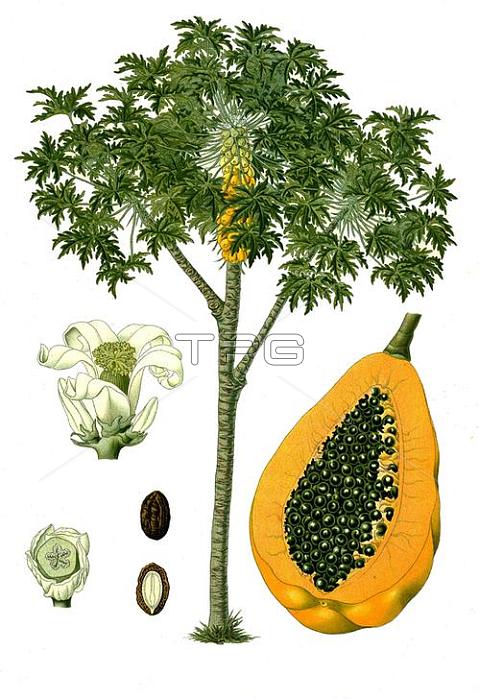
The papaya (from Carib via Spanish); papaw; or pawpaw is the fruit of the plant Carica papaya; the sole species in the genus Carica of the plant family Caricaceae. It is native to the tropics of the Americas; perhaps from southern Mexico and neighbouring Central America. It was first cultivated in Mexico several centuries before the emergence of the Mesoamerican classical civilizations.
The papaya is a large; tree-like plant; with a single stem growing from 5 to 10 m (16 to 33 ft) tall; with spirally arranged leaves confined to the top of the trunk. The lower trunk is conspicuously scarred where leaves and fruit were borne. The leaves are large; 50-70 cm (20-28 in) in diameter; deeply palmately lobed; with seven lobes. Unusually for such large plants; the trees are dioecious. The tree is usually unbranched; unless lopped. The flowers are similar in shape to the flowers of the Plumeria; but are much smaller and wax-like. They appear on the axils of the leaves; maturing into large fruit - 15-45 cm (5.9-17.7 in) long and 10-30 cm (3.9-11.8 in) in diameter. The fruit is ripe when it feels soft (as soft as a ripe avocado or a bit softer) and its skin has attained an amber to orange hue. Pictures From History
| px | px | dpi | = | cm | x | cm | = | MB |
Details
Creative#:
TOP19386301
Source:
達志影像
Authorization Type:
RM
Release Information:
須由TPG 完整授權
Model Release:
No
Property Release:
No
Right to Privacy:
No
Same folder images:

 Loading
Loading